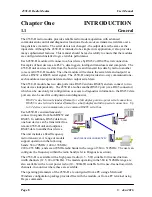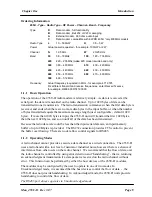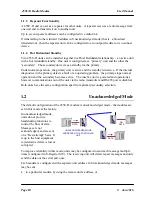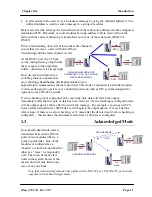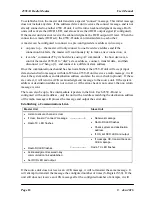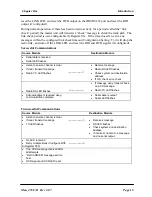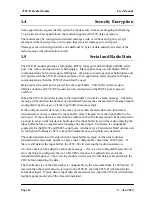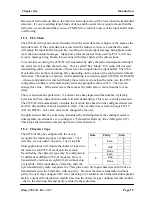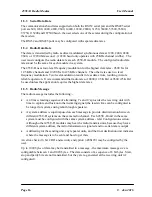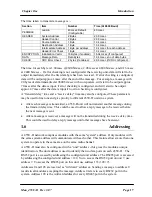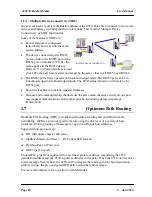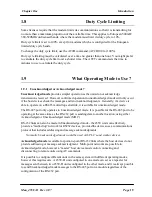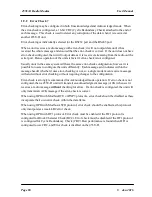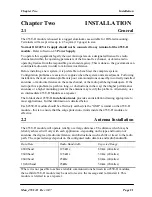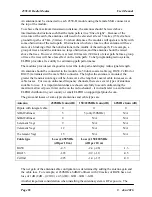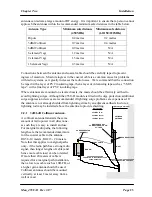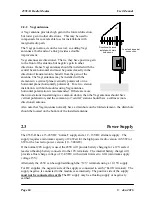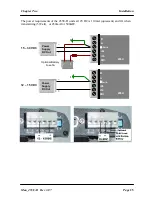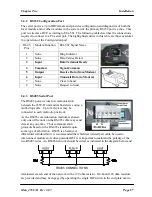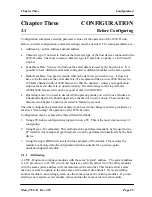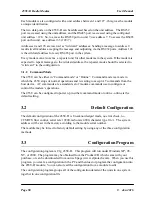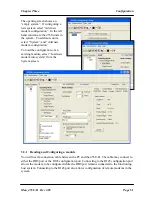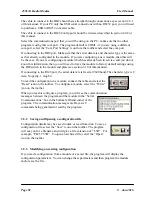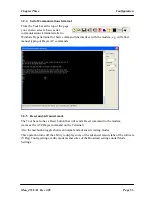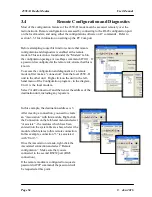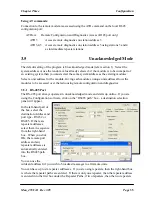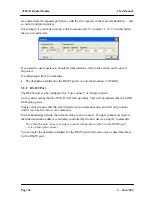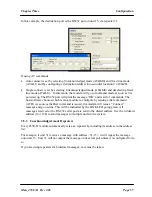
455U-D Radio Modem
User Manual
Page
22
©
Jan 2016
An antenna must be connected to each 455U-D module using the female SMA connector at
the top of the module.
To achieve the maximum transmission distance, the antennas should be raised above
intermediate obstructions such that the radio path is true “line of sight”. Because of the
curvature of the earth, the antennas will need to be elevated at least 5 metres (15 feet) above
ground for paths of 5 km (3 miles). For short distances, the modules will operate reliably with
some obstruction of the radio path. Obstructions which are close to either antenna will have
more of a blocking effect than obstructions in the middle of the radio path. For example, a
group of trees around the antenna is a large obstruction, and the antenna should be raised
above the trees. However if there is at least 100 meters (300 feet) of clear path before a group
of trees, the trees will have less effect on the radio path. To help in planning radio systems,
ELPRO provides a free utility for estimating path performance.
The modules provide test diagnostics to test the radio path and display radio signal strength.
An antenna should be connected to the module via 50 ohm coaxial cable (eg RG58, Cellfoil or
RG213) terminated with a male SMA connector. The higher the antenna is mounted, the
greater the transmission range will be, however as the length of coaxial cable increases so do
cable losses. For use on unlicensed frequency channels, there are several types of antennas
suitable for use. It is important antennas are chosen carefully to avoid contravening the
maximum allowed power limit on the on the radio channel - if in doubt refer to a authorized
ELPRO distributor in your country or email ELPRO on [email protected].
The gains and losses of some typical antennas and cable types are
Antenna
450MHz Gain (dB)
150/220MHz Gain (dB)
60MHz Gain (dB)
Dipole with integral cable
0
0
0
3dBd Collinear
5
5 (only 150MHz)
N/A
6dBd Collinear
8
N/A
N/A
6 element Yagi
9
N/A
N/A
9 element Yagi
12
N/A
N/A
16 element Yagi
15
N/A
N/A
Cable type
Loss @ 450MHz
(dB per 10 m)
Loss @ 150/220MHz
(dB per 10 m)
RG58
-4.5
-2.4 (-2.8)
-1.3
RG213
-1.65
-0.9 (-1.1)
-0.5
Cellfoil
-2.25
-1.4 (-1.7)
-0.9
The net gain of the antenna/cable configuration is determined by adding the antenna gain and
the cable loss. For example, at 450MHz a 6dBd Collinear with 20 metres of RG58 has a net
loss of 1 dB (8dB – ((20/10) x 4.5) dB) = 8dB – 9dB = -1dB
Another important consideration when installing the antenna system is RF exposure. The

